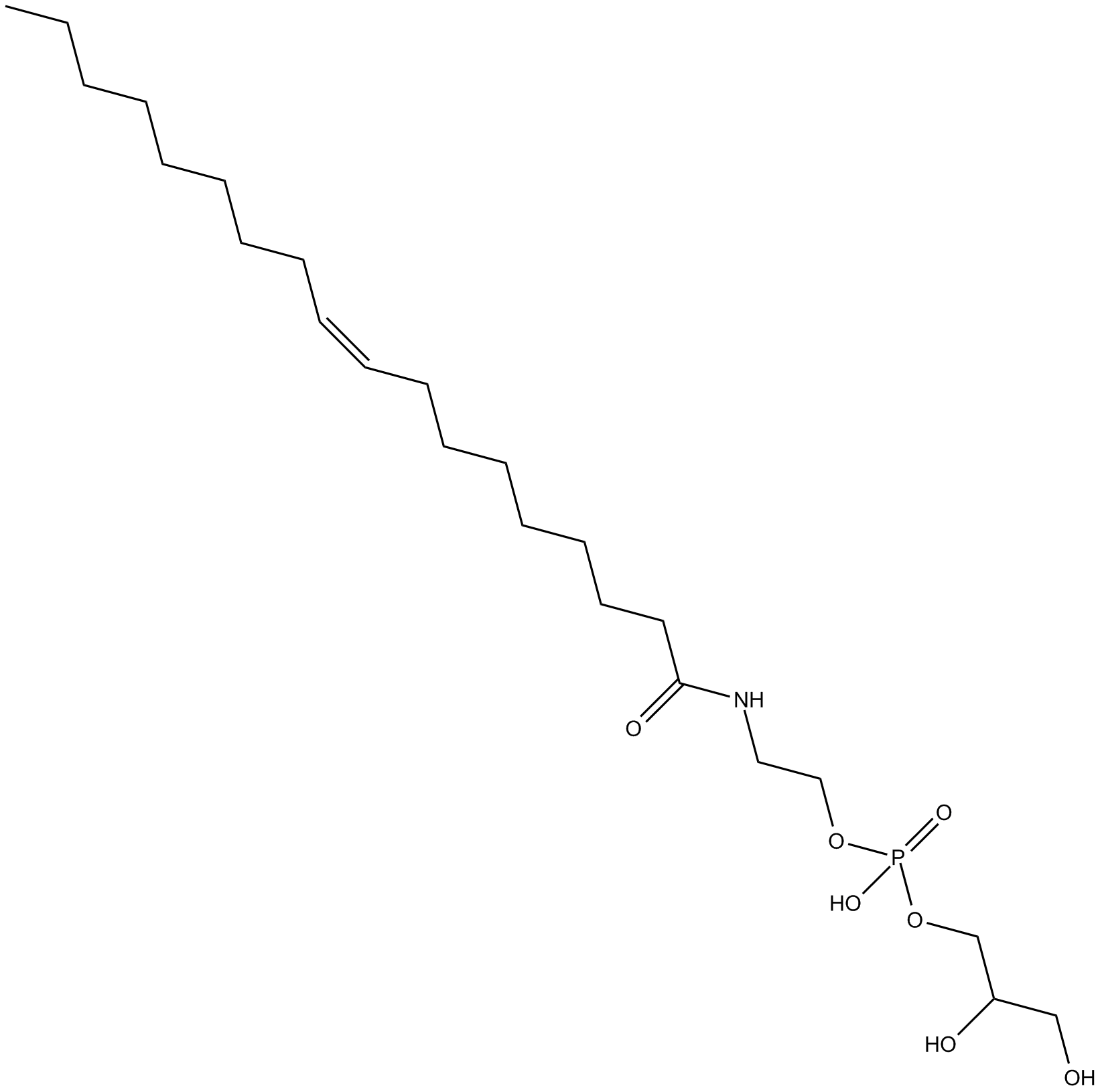Glycerophospho-N-Oleoyl Ethanolamine |
| Katalog-Nr.GC14531 |
precursor of oleoyl ethanolamide (OEA)
Products are for research use only. Not for human use. We do not sell to patients.

Cas No.: 201738-24-1
Sample solution is provided at 25 µL, 10mM.
Glycerophospho-N-Oleoyl Ethanolamine is the precursor of oleoyl ethanolamide (OEA). The fatty-acid ethanolamide, oleoylethanolamide (OEA) is a naturally occurring lipid. Oleoylethanolamide is an endogenous PPAR-α agonist. Oleoylethanolamide has been involved in modulating feeding and energy homeostasis by binding to peroxisome proliferator-activated receptor-alpha (PPAR-α) [1]. PPAR-α is a transcription factor and a major regulator of lipid metabolism in the liver. Activation of PPAR-α is mainly involved in fatty acid oxidation and expressed in liver, kidney, and skeletal muscle. Through ligand binding, PPAR-α promotes uptake, utilization, and catabolism of fatty acids [2].
OEA reduced food intake and lowered body-weight gain. Subchronic OEA treatment (5 mg/kg, i.p., once daily for two weeks) in Zucker rats initiated transcription of PPAR-α and other PPAR-α target gene [1]. OEA is an endogenous, potent agonist for PPARα. OEA activated PPARα with an EC50 value of 120 nM in a transactivation assay [3]. In rodents, intraperitoneal administration of OEA induced satiety and peripheral utilization of lipid substrate. Acute oral administration induced satiety [4].
References:
[1] Fu J, Oveisi F, Gaetani S, et al. Oleoylethanolamide, an endogenous PPAR-α agonist, lowers body weight and hyperlipidemia in obese rats[J]. Neuropharmacology, 2005, 48(8): 1147-1153.
[2] Schiffrin E L, Amiri F, Benkirane K, et al. Peroxisome proliferator-activated receptors[J]. Hypertension, 2003, 42(4): 664-668.
[3] Fu J, Gaetani S, Oveisi F, et al. Oleylethanolamide regulates feeding and body weight through activation of the nuclear receptor PPAR-α[J]. Nature, 2003, 425(6953): 90-93.
[4] Thabuis C, Destaillats F, Tissot‐Favre D, et al. Oleoyl‐ethanolamide (OEA): A bioactive lipid derived from oleic acid and phosphatidylethanol‐amine[J]. Lipid Technology, 2007, 19(10): 225-227.
Average Rating: 5 (Based on Reviews and 25 reference(s) in Google Scholar.)
GLPBIO products are for RESEARCH USE ONLY. Please make sure your review or question is research based.
Required fields are marked with *




















